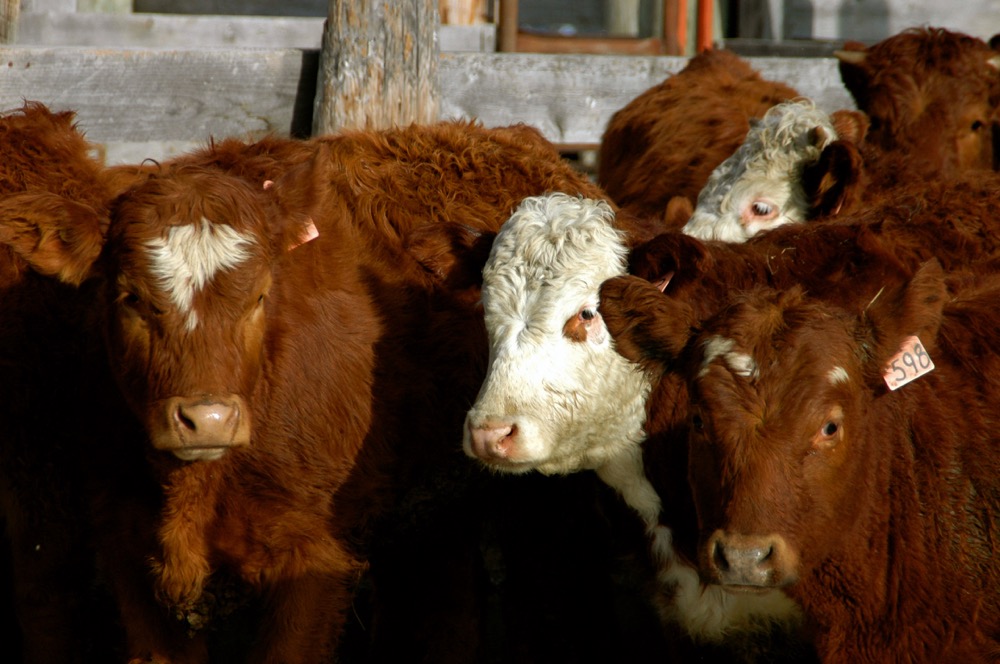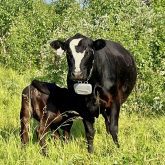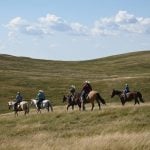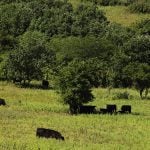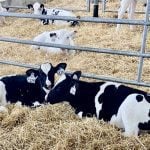With more droughts in the future, grass managers need to develop a strong management plan and a destocking strategy to act upon when it doesn’t rain or have a method to take advantage of lush growth if there’s plenty of moisture.
“The stock or destock strategy is an interesting and difficult concept,” says Dr. Bart Lardner, University of Saskatchewan. “Wise and prudent producers are those that keep good annual stocking rate records for each of their paddocks or use provincial stocking rate guidelines for native and tame pasture when deciding their stocking rates each year depending on rainfall. They need to know on their operation what the stock rate or stock density was in high, moderate, low rainfall years. Being able to manipulate their stocking rates may be easier with yearlings vs. cow-calf pairs.”
“Good pasture management to minimize the drought effect and the ability to de-stock to deal with lack of pasture and available forage is extremely important,” says Jack Kyle, retired pasture specialist with Ontario Ministry of Agriculture, Food and Rural Affairs. “The nature of the operation will influence what steps might be taken.”
Read Also

Alberta ranch family outlasts droughts
Over the years, the Lehr family has learned a thing or two about managing the ranch through dry years
Kyle advises producers to preg check cows and market open cows to save feed. Cull sooner rather than later, he adds, and in stages, becoming more aggressive as feed shortages worsen.
“Keep calves over winter and background in the spring until extra grass has been utilized. They could be sold at any point during the summer and in different packages,” Kyle adds.
Kyle stresses the need to do a feed budget for the full year. Know how much forage is needed for the current herd, and how much will be produced in conditions ranging from very dry to excellent. Look at whether you can use crop residue, cover crops and annual crop to supplement perennial forage.
“The goal is to produce quality perennial forage from productive species that are tolerant of less-than-ideal growing conditions. These would be species with deep roots to get down to the moisture,” says Kyle.
Research has shown that fertilizing perennial pastures and controlling weeds helps those pastures remain relatively productive during a drought, Kyle adds.
Avoiding overgrazing remains key, Kyle says. Leaving sufficient plant material post-grazing allows plants to recover and continue growing. Roots are a mirror image of what is above ground. Short pastures have shallow roots.
“Remember that leaves grow to sunlight, while roots grow to moisture. The roots drive the pasture system.”
Kyle also stresses the need to do a forage inventory every two weeks during normal growth times and every week when growing conditions are less than ideal.
“When the cattle are grazing the paddocks, the faster the grass is growing, the faster you move to the next pasture. The longer the rest period between grazing events the better, as the rest period is essential for optimizing plant growth. Strong plants have more drought tolerance and better regrowth potential after drought stress.”
Good pasture management in years before a drought will produce more forage in dry conditions and more resilience, Kyle says. “I saw well-managed operations getting six weeks more forage grazing than unmanaged pastures with a set stocking or minimally managed ones with only a couple of pasture fields.”
As for de-stocking, producers need a plan and a set of animals that can be moved at any time, Kyle says. “The people who get into trouble hold on for way too long and then end up in a crisis.”
In Manitoba, Pam Iwanchysko, a livestock adaptation specialist with Manitoba Agriculture and Resource Development, finds that the strategy that works for many grass farmers is “rotational, mob or planned grazing.” By continuously monitoring smaller paddocks and holding them back for longer rest periods, pastures recover faster and better when they do receive some moisture, she says.
Iwanchysko has been heavily involved with the Manitoba Beef and Forage Initiatives farm north of Brandon, Man. This project farm is a partnership with Manitoba Agriculture, Manitoba Beef Producers, Ducks Unlimited and the Manitoba Forage and Grassland Association that conducts on-farm research and field testing of practices related to beef cattle and forage production, then disseminates results to farmers and the public.
“Our planned grazing project at the farm had an additional one-month-plus grazing just due to moving the cattle daily on smaller paddocks for the last three years. It turns out to be significant when you factor in the economics of additional weight gain on the calves and that much less supplemental feed was required at the end of the grazing season. There is also the overlooked measurement of soil retention and health when factoring in that the ground is always covered and the forage population that was seeded initially has still been maintained and has not succeeded into a Kentucky bluegrass stand.”
Iwanchysko says they haven’t needed to use fertilizer either, as manure is distributed evenly for recycling and growth. “Much of the continuous pasture has moved to a single stand of Kentucky bluegrass. It will need a lot of TLC to come back to its original potential.”
The farm received a minimal amount of precipitation last year, so that needed to be factored into the equation, she adds. Supplemental feeding on pasture worked well for many producers in Manitoba last year, getting them through the “really tough periods” until late fall rains triggered “fantastic regrowth.” Annuals also helped many producers, as some got two good growths that got them through the season.
“One of the comments that I had from producers this summer was how to deal with the grasshoppers. We were lucky in that we did not have to deal with them at the farm, but much of the Interlake, which is Manitoba’s cattle country, was affected. Even under the best management, I have not been able to wrap my head around that one yet. Many of the producers lost a lot of grazing to those insects,” says Iwanchysko.

